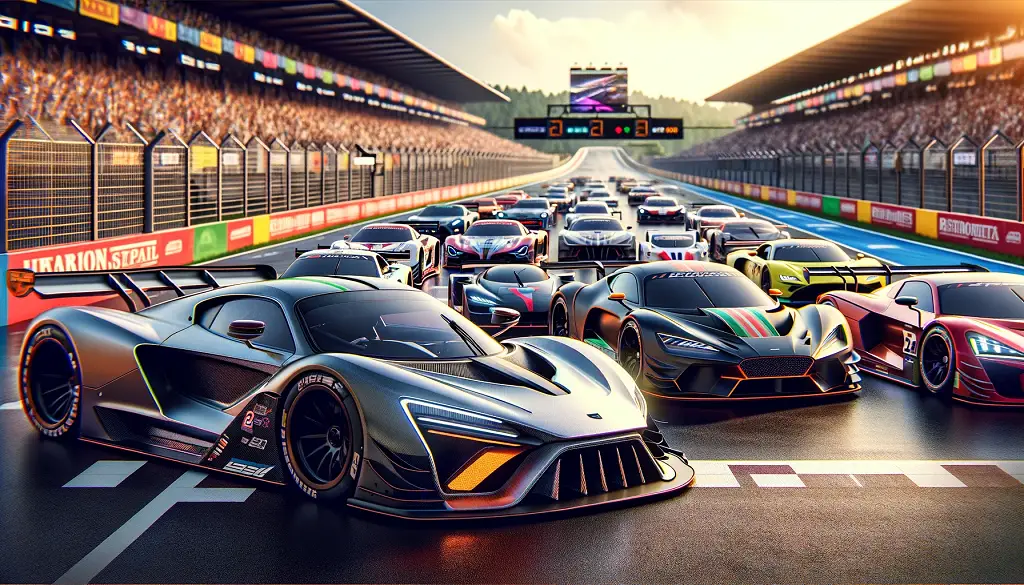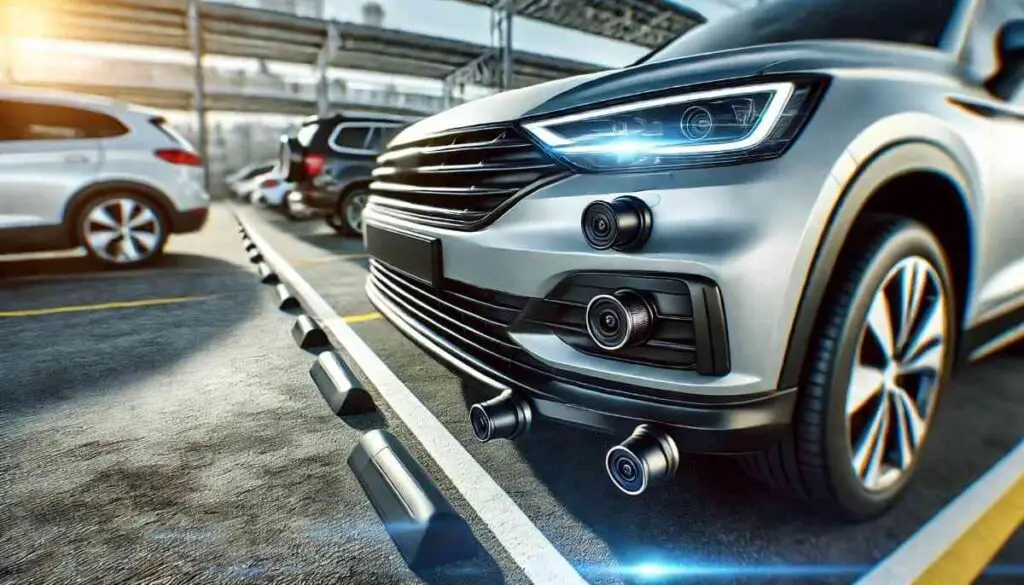Choosing the “best” car for racing depends heavily on factors like:
- Race discipline: Are you looking for a track car, rally car, drift car, dragster, or something else entirely? Each discipline has its own specific needs and demands.
- Budget: Racing cars can range from relatively affordable, modified street cars to multi-million dollar purpose-built machines.
- Skill level: Are you a seasoned racer or just starting out? Beginner-friendly cars will be different from those pushing the limits in professional competition.
- Personal preferences: Do you prefer rear-wheel drive, all-wheel drive, manual transmission, etc.? Consider the driving experience you want.
With those in mind, here are some options for different categories in 2024:
Track Racing:
- High-performance street cars: For beginners or occasional track enthusiasts, modified versions of cars like the Chevrolet Corvette Z06, Porsche 911 GT3, or Toyota GR Supra can be excellent choices. They offer a balance of performance, affordability, and relative practicality.
- Purpose-built track cars: More experienced drivers might consider dedicated track cars like the McLaren 720S GT3, Brabham BT62, or Dallara Stradale. These offer superior track performance but come at a higher cost and often require more maintenance.
Rally Racing:
- Rally-bred cars: The Subaru WRX STI, Ford Fiesta ST Rally Edition, and Mitsubishi Lancer Evo are classic rally platforms with established tuning parts and communities.
- Off-road vehicles: For rugged terrain, modified SUVs like the Toyota Land Cruiser or Jeep Wrangler can be competitive in certain rally classes.
Drift Racing:
- Rear-wheel drive coupes with powerful engines: Nissan 240SX, BMW E30, Mazda MX-5, and Toyota AE86 are popular choices due to their affordability, tunability, and inherent balance for drifting.
- Modern sports cars: More budget-conscious options might include rear-wheel drive versions of the Ford Mustang or Chevrolet Camaro.
Drag Racing:
- Muscle cars: Classic American muscle cars like the Ford Mustang Shelby GT500, Chevrolet Camaro ZL1, and Dodge Challenger Hellcat are popular and powerful platforms for drag racing.
- Dedicated dragsters: For maximum performance, purpose-built dragsters with massive engines and specialized chassis offer the fastest times but require significant expertise and resources.
Porsche 911 GT3:
Model variations
The Porsche 911 GT3 is available in a variety of models, each with its own unique features and performance characteristics.
- Base GT3: This is the most basic version of the GT3, and it offers a good balance of performance, features, and affordability. It is powered by a 4.0-liter naturally aspirated flat-six engine that produces 502 horsepower and 346 lb-ft of torque. It can accelerate from 0 to 60 mph in 3.2 seconds and has a top speed of 197 mph.
- GT3 Touring Package: This version of the GT3 features a more subtle rear wing and other styling changes that make it more suitable for everyday driving. It is powered by the same engine as the base GT3, but it has a slightly different suspension setup that prioritizes comfort over performance.
- GT3 RS: This is the most hardcore version of the GT3, and it is designed for maximum track performance. It features a number of performance enhancements, including a more powerful engine, a more aggressive suspension, and lighter weight materials. The GT3 RS is powered by a 4.0-liter naturally aspirated flat-six engine that produces 520 horsepower and 347 lb-ft of torque. It can accelerate from 0 to 60 mph in 3.0 seconds and has a top speed of 199 mph.
Driving experience
The Porsche 911 GT3 is a truly exhilarating driving experience. It is incredibly agile and responsive, and it offers a level of feedback that is unmatched by many other cars. The GT3 is also incredibly stable at high speeds, thanks to its aerodynamic design and powerful brakes.
The GT3’s engine is a masterpiece, and it provides a visceral and intoxicating driving experience. The engine revs freely to its 9,000-rpm redline, and it produces a glorious sound that is sure to put a smile on your face.
The GT3’s handling is simply superb. The car’s suspension is perfectly tuned for track driving, and it provides excellent grip and balance. The GT3 is also incredibly precise, and it responds instantly to driver inputs.
The GT3’s brakes are also top-notch. They are incredibly powerful and fade-resistant, and they provide excellent stopping power.
Overall, the Porsche 911 GT3 is an exceptional sports car that offers an exhilarating driving experience. It is the perfect choice for drivers who are looking for a car that is both track-capable and enjoyable to drive on the street.
Competitors
The Porsche 911 GT3 has a number of competitors, including the following:
- McLaren 720S: This British supercar is powered by a 4.0-liter twin-turbocharged V8 engine that produces 710 horsepower and 568 lb-ft of torque. It can accelerate from 0 to 60 mph in 2.8 seconds and has a top speed of 212 mph.
- BMW M8 GCS: This German grand tourer is powered by a 4.4-liter twin-turbocharged V8 engine that produces 617 horsepower and 553 lb-ft of torque. It can accelerate from 0 to 60 mph in 3.1 seconds and has a top speed of 200 mph.
- Ferrari 488 GTB: This Italian supercar is powered by a 3.9-liter twin-turbocharged V8 engine that produces 661 horsepower and 561 lb-ft of torque. It can accelerate from 0 to 60 mph in 3.0 seconds and has a top speed of 205 mph.
Each of these cars offers its own unique strengths and weaknesses. The McLaren 720S is the most powerful, the BMW M8 GCS is the most luxurious, and the Ferrari 488 GTB is the most stylish. Ultimately, the best car for you will depend on your individual needs and preferences.
Future updates
Porsche has not yet announced any major updates to the 911 GT3 for the 2024 model year. However, it is possible that the car will receive some minor changes, such as updated styling or new features.
Cadillac V-Series Blackwing:
The Cadillac V-Series Blackwing is a high-performance variant of the Cadillac CT5 sedan. It is powered by a 6.2-liter supercharged V8 engine that produces 668 horsepower and 659 lb-ft of torque. The engine is mated to either a six-speed manual transmission or a 10-speed automatic transmission. The Blackwing can accelerate from 0 to 60 mph in 3.6 seconds and has a top speed of over 200 mph.
The Blackwing features a number of performance-enhancing upgrades over the standard CT5, including a stiffer suspension, upgraded brakes, and a more aggressive exterior design. The interior also features a number of upgrades, including sport seats, a performance steering wheel, and a carbon fiber trim package.
The Cadillac V-Series Blackwing is a track-capable sedan that offers a level of performance that is unmatched by any other Cadillac model. It is a car for drivers who demand the best in performance and handling.
Here are some of the key features of the Cadillac V-Series Blackwing:
- 6.2-liter supercharged V8 engine with 668 horsepower and 659 lb-ft of torque
V-Series Blackwing - Six-speed manual transmission or 10-speed automatic transmission
- Track-capable suspension
- Upgraded brakes
- More aggressive exterior design
- Sport seats
- Performance steering wheel
- Carbon fiber trim package
The Cadillac V-Series Blackwing is a high-performance sedan that is sure to turn heads. It is a car for drivers who demand the best in performance and handling.
Ford Mustang GT350:
The Ford Mustang GT350 is a high-performance variant of the Ford Mustang. It is powered by a 5.2-liter V8 engine that produces 526 horsepower and 429 lb-ft of torque.
The engine is mated to a six-speed manual transmission.
The GT350 can accelerate from 0 to 60 mp

The GT350 features a number of performance-enhancing upgrades over the standard Mustang, including a stiffer suspension, upgraded brakes, and a more aggressive exterior design.
The interior also features a number of upgrades, including sport seats, a performance steering wheel, and a flat-bottomed pedal cluster.
The Ford Mustang GT350 is a track-capable sports car that offers a level of performance that is unmatched by any other Mustang model. It is a car for drivers who demand the best in performance and handling.
Nissan GT-R Nismo:
The Nissan GT-R Nismo is the most powerful and track-focused version of the Nissan GT-R. It is powered by a 3.8-liter twin-turbocharged V6 engine that produces 600 horsepower and 481 lb-ft of torque.

The engine is mated to a six-speed dual-clutch transmission. The GT-R Nismo can accelerate from 0 to 60 mph in 2.9 seconds and has a top speed of 205 mph.
The GT-R Nismo features a number of performance-enhancing upgrades over the standard GT-R, including a stiffer suspension, upgraded brakes, and a more aggressive exterior design.
The interior also features a number of upgrades, including sport seats, a performance steering wheel, and a carbon fiber trim package.
The Nissan GT-R Nismo is a high-performance sports car that is sure to turn heads. It is a car for drivers who demand the best in performance and handling.
Toyota GR Supra:
The Toyota GR Supra is a sports car that’s been praised for its handling and performance. It’s powered by a 3.0-liter turbocharged inline-six engine that produces 382 horsepower.
These are just a few of the many great cars that are available for racing in 2024. When choosing a car for racing, it’s important to consider your budget, experience level, and the type of racing you plan to do.
The Toyota GR Supra is a sports car manufactured by Toyota. It was first released in 2020 and is the fifth generation of the Supra nameplate.
The GR Supra is a two-door, rear-wheel-drive car that is available with either a 2.0-liter turbocharged four-cylinder engine or a 3.0-liter turbocharged inline-six engine.
The four-cylinder engine produces 255 horsepower and 295 lb-ft of torque, while the six-cylinder engine produces 382 horsepower and 368 lb-ft of torque. Both engines are paired with an eight-speed automatic transmission.
The GR Supra is based on the same platform as the BMW Z4, and the two cars share many components. However, Toyota has made significant changes to the Supra’s suspension and steering to give it a more engaging driving experience.
The GR Supra has also been praised for its sharp handling and excellent balance.
The GR Supra is available in three trim levels: 2.0, 3.0, and A91. The 2.0 trim is the base model and comes standard with features such as LED headlights, a 12.3-inch digital instrument cluster, and an 8.8-inch touchscreen infotainment system.
The 3.0 trim adds features such as a 10.25-inch touchscreen infotainment system, a JBL sound system, and heated and ventilated front seats. The A91 trim is the top-of-the-line model and adds features such as a carbon fiber roof, a rear spoiler, and a unique interior.
The Toyota GR Supra is a fun and engaging sports car that offers excellent performance and handling. It is a great choice for drivers who are looking for a car that is both fun to drive and comfortable to live with.
Pros and Cons of Buying a Racing Car
There are a number of pros and cons to consider when buying a racing car.
Pros:
- Racing cars are designed for performance, so they can provide a thrilling driving experience.
- Racing cars are often very stylish, so they can turn heads wherever you go.
- Racing cars can be a great investment, as they can often appreciate in value over time.
Cons:
- Racing cars can be expensive to buy and maintain.
- Racing cars can be dangerous to drive, so it’s important to have the proper training and experience before taking one on the track.
- Racing cars can be difficult to insure, so you may have to pay higher premiums.
If you’re considering buying a racing car, it’s important to weigh the pros and cons carefully. Racing cars can be a great way to enjoy the thrill of the track, but they’re not for everyone.
Questions People Also Ask:
- What are the most popular types of racing?
Some of the most popular types of racing include:
- Formula 1 (F1): The pinnacle of open-wheel racing, known for its high-speed races and technologically advanced cars.
- NASCAR: Popular in the United States, it features stock cars racing on oval tracks.
- Le Mans: Endurance racing held in France, including the famous 24 Hours of Le Mans.
- Rally: Off-road racing on various terrains, with events like the World Rally Championship (WRC).
- IndyCar: Similar to F1, but primarily raced on oval tracks in the United States.
- Drag Racing: High-speed acceleration races on straight tracks.
- Touring Car Racing: Sedan-based racing with modified production cars, such as the British Touring Car Championship (BTCC) and the Deutsche Tourenwagen Masters (DTM).
- What are the different types of racing cars?
There are various types of racing cars designed for different types of racing. Some common types include:
- Formula cars: Open-wheel, single-seat cars used in Formula 1, IndyCar, and other open-wheel racing series.
- Stock cars: Based on production cars but modified for racing, primarily used in NASCAR.
- Touring cars: Modified production cars used in touring car racing, such as the BTCC and DTM.
- Sports cars: Cars built for endurance racing, like the 24 Hours of Le Mans, including categories such as Le Mans Prototypes (LMP) and Grand Touring (GT).
- Rally cars: Specifically designed for off-road rally racing, with features like all-wheel drive and increased suspension travel.
- Dragsters: Purpose-built cars for drag racing, optimized for straight-line acceleration.
- What are the safety features of racing cars?
Racing cars incorporate various safety features to protect drivers in the event of accidents. Some common safety features in racing cars include:
- Roll cages: Reinforced structures surrounding the driver’s compartment to provide rigidity and protect against rollovers.
- Racing harnesses: Multi-point seat belts that securely hold the driver in place.
- Fire suppression systems: Installed to quickly extinguish fires in the event of an accident.
- Safety fuel cells: Specially designed fuel tanks that minimize the risk of fuel leaks and explosions.
- HANS device: A head and neck support system that reduces the risk of neck injuries.
- Impact-absorbing materials: Energy-absorbing materials in the car’s structure and seat to mitigate crash forces.
- Onboard fire extinguishers: Handheld extinguishers within reach of the driver.
- Safety nets and window nets: Prevent debris from entering the cockpit.
- Helmets and safety suits: Protective gear designed to reduce the risk of head and body injuries.
- What are the costs of racing?
The costs of racing can vary significantly depending on the type of racing and level of competition. Some factors that contribute to the costs include:
- Entry fees for races and championships
- Costs of purchasing or renting a racing car
- Maintenance and repair expenses for the car
- Costs of spare parts and upgrades
- Fuel, tires, and other consumables
- Travel and accommodation expenses for races
- Costs of professional training and coaching
- Insurance for the car and equipment
- Licensing fees and memberships in racing organizations
It’s important to note that racing can be an expensive sport, especially at higher levels. The costs can range from a few thousand dollars for amateur racing to millions of dollars for professional teams in top-tier racing series.
If you have any other questions about racing cars, be sure to do your research and consult with a professional.
In conclusion, there are several great options for racing cars available in 2024. Some notable choices include the Porsche 911 GT3, Cadillac V-Series Blackwing, Ford Mustang GT350, Nissan GT-R Nismo, and Toyota GR Supra. These cars are specifically designed for performance and offer exhilarating driving experiences on the track.
Each of these cars has its unique features and characteristics. The Porsche 911 GT3 stands out with its rear-engine layout, aerodynamic design, and track-focused features. The Cadillac V-Series Blackwing offers a powerful supercharged V8 engine and a track-capable suspension. The Ford Mustang GT350 impresses with its V8 power and aggressive design. The Nissan GT-R Nismo showcases exceptional acceleration and high-performance upgrades. The Toyota GR Supra combines sportiness and comfort with its turbocharged engine and engaging driving experience.
When considering buying a racing car, it’s important to weigh the pros and cons. Racing cars offer thrilling experiences and can appreciate in value over time, but they can also be expensive to purchase and maintain. Additionally, driving a racing car requires proper training and experience, and insurance costs may be higher.
Finally, there are various types of racing, including Formula 1, NASCAR, Le Mans, rally, IndyCar, drag racing, and touring car racing. Each type has its own unique characteristics and attracts different enthusiasts.
If you’re interested in getting started with racing, it’s recommended to do thorough research, consult with professionals, and consider your budget, experience level, and the type of racing you want to pursue.










